Abstract
Five studies were carried out around hazardous waste sites in California in which the main route of exposure was to low-level parts per billion concentrations of either gaseous emissions or airborne dust particles. Although there was no evidence suggesting excesses in cancer or birth defects, the total number and the prevalence of many of subjective symptoms were higher in areas near the site than in control neighborhoods. We discuss a number of causal processes that could explain these results. We conclude that a classical toxicological response and mass psychogenic illness are not valid explanations. Recall bias may explain part of the pattern. We present data from situations where stress alone from environmental anxiety has produced a similar magnitude of excess symptoms in populations. The fact that excess symptoms in waste site neighbors is found primarily in those who complain of odors or who are worried about environmental chemicals suggests the possibility that autonomic, stress-mediated mechanisms or behavioral sensitization are active in the genesis of these symptoms. A variety of confounders were controlled for. The hypothesis that chemically "acquired immune deficiency" can cause subtle symptomatology as a prodrome to subsequent serious disease has been raised in testimony at several toxic tort trials about waste sites. Although this hypothesis seems unlikely, particularly at sites such as the ones we studied with low airborne exposures, if true it would have profound regulatory implications.
Full text
PDF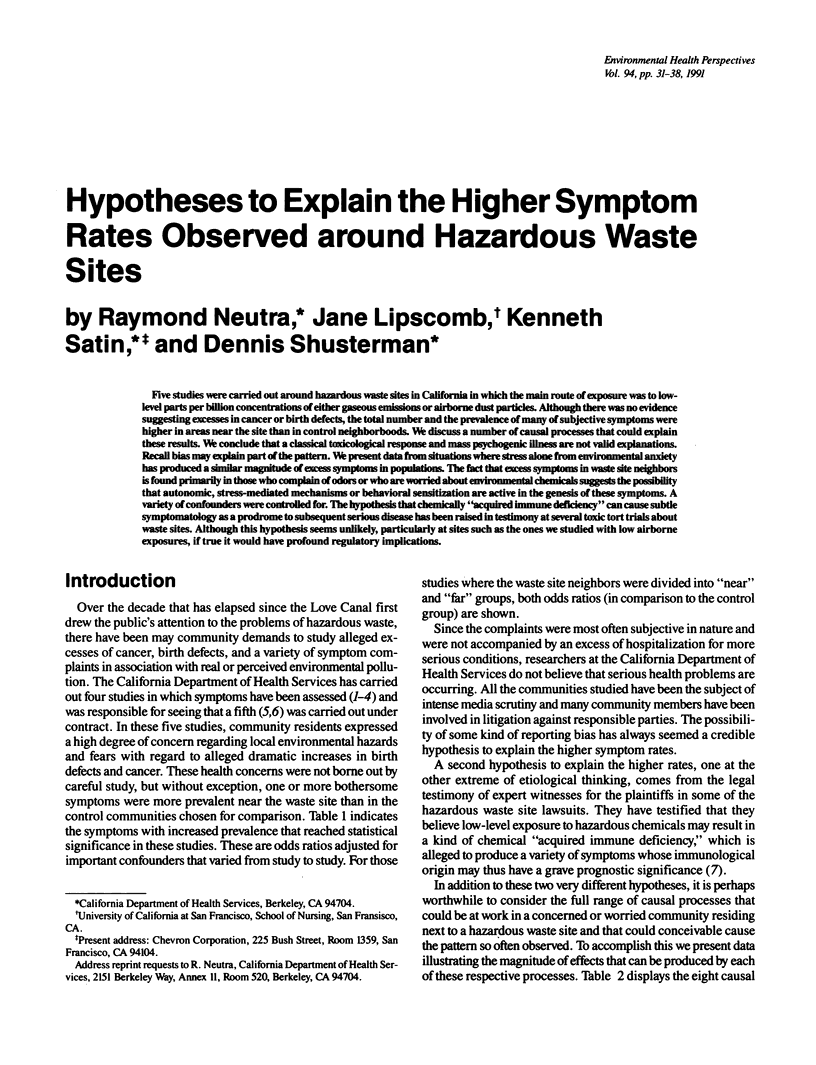
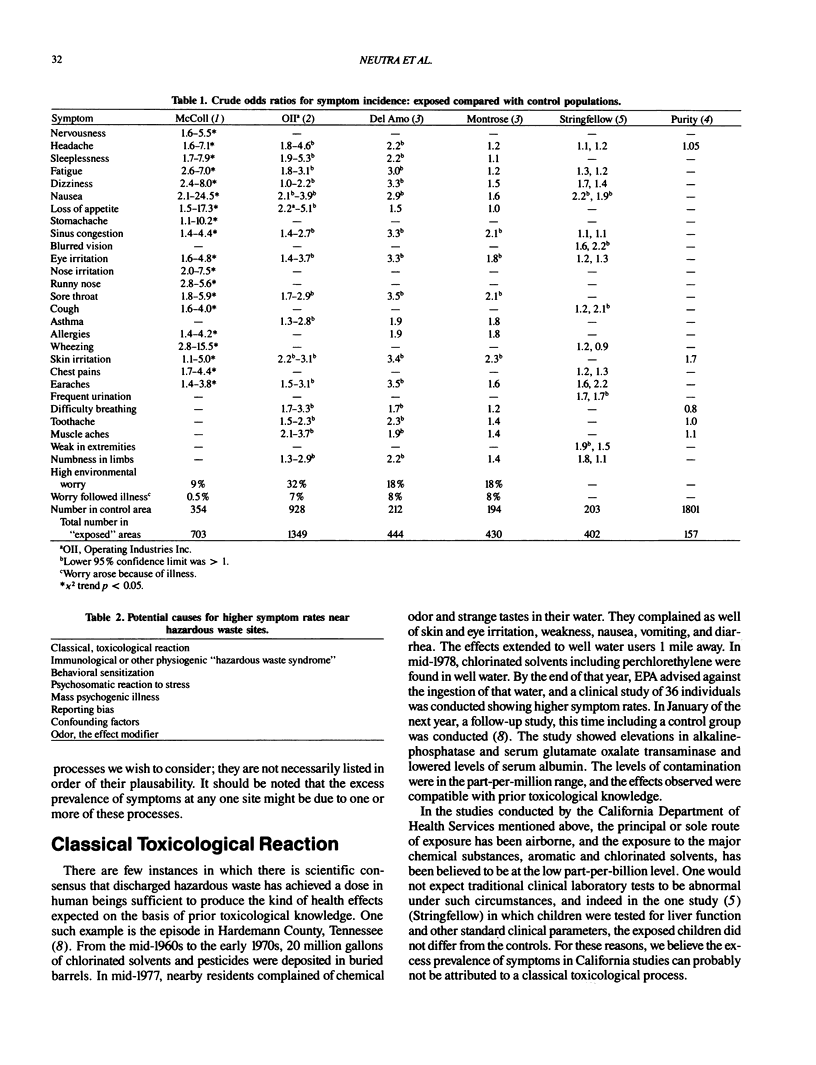
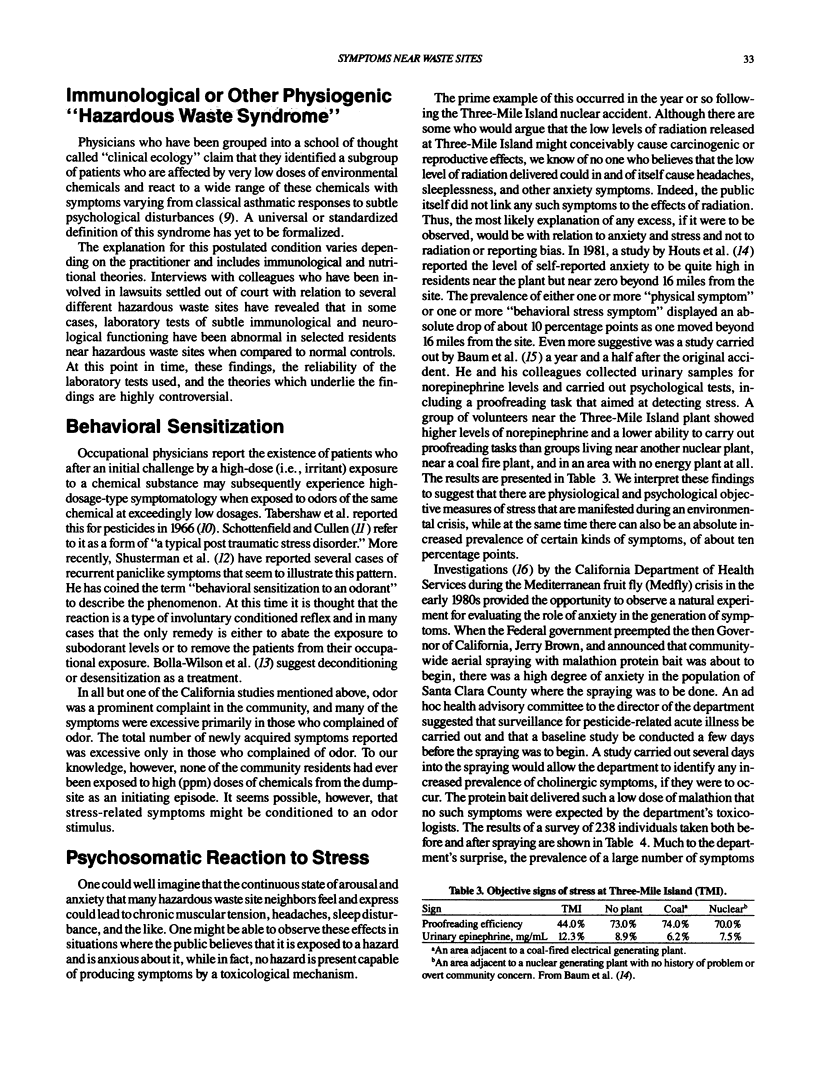
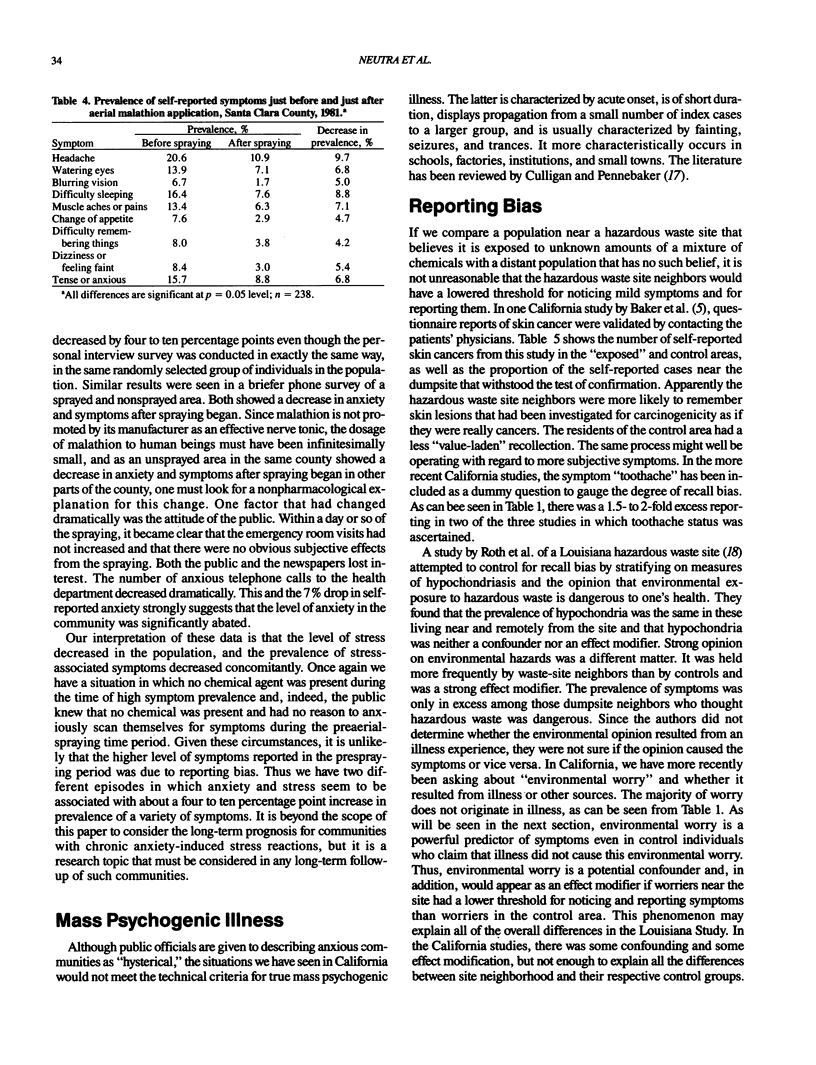
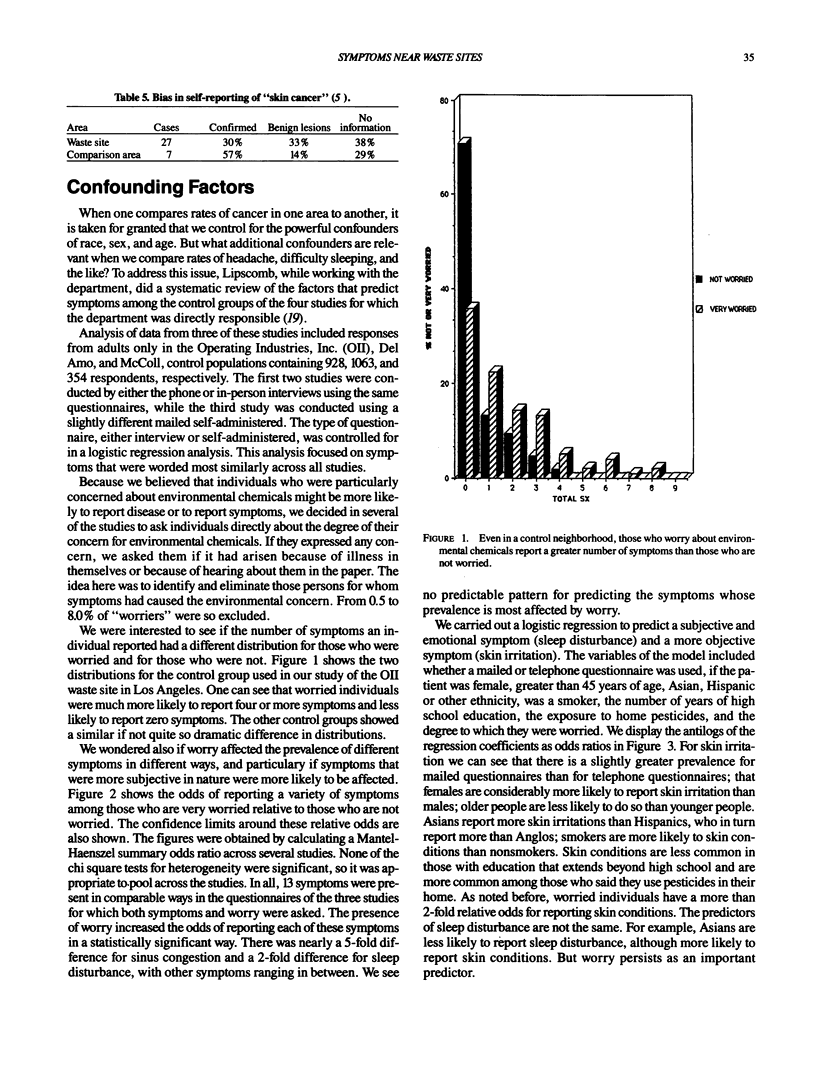
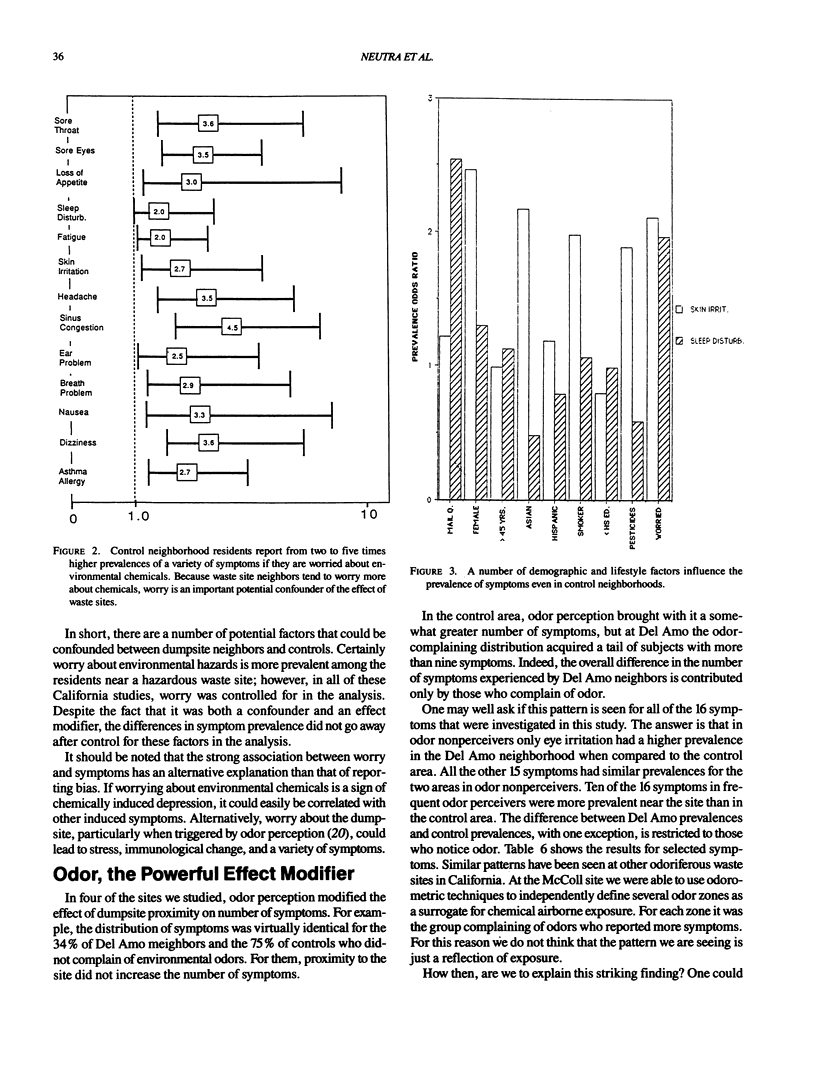
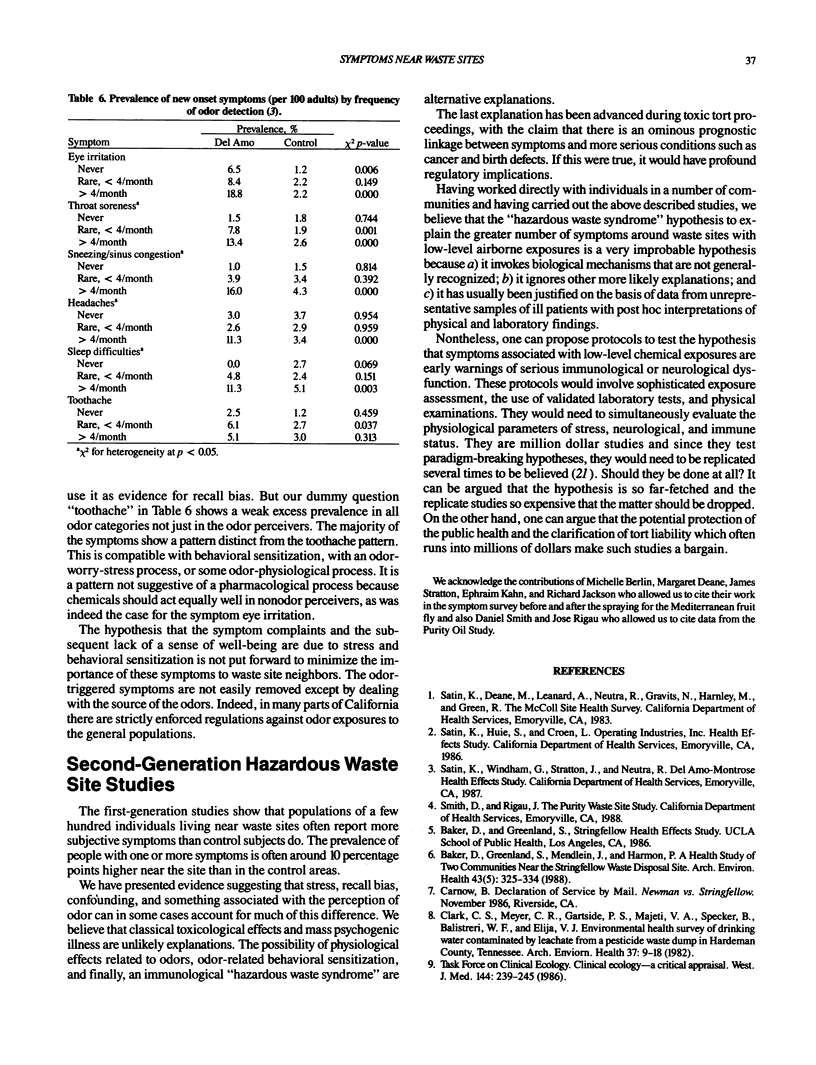
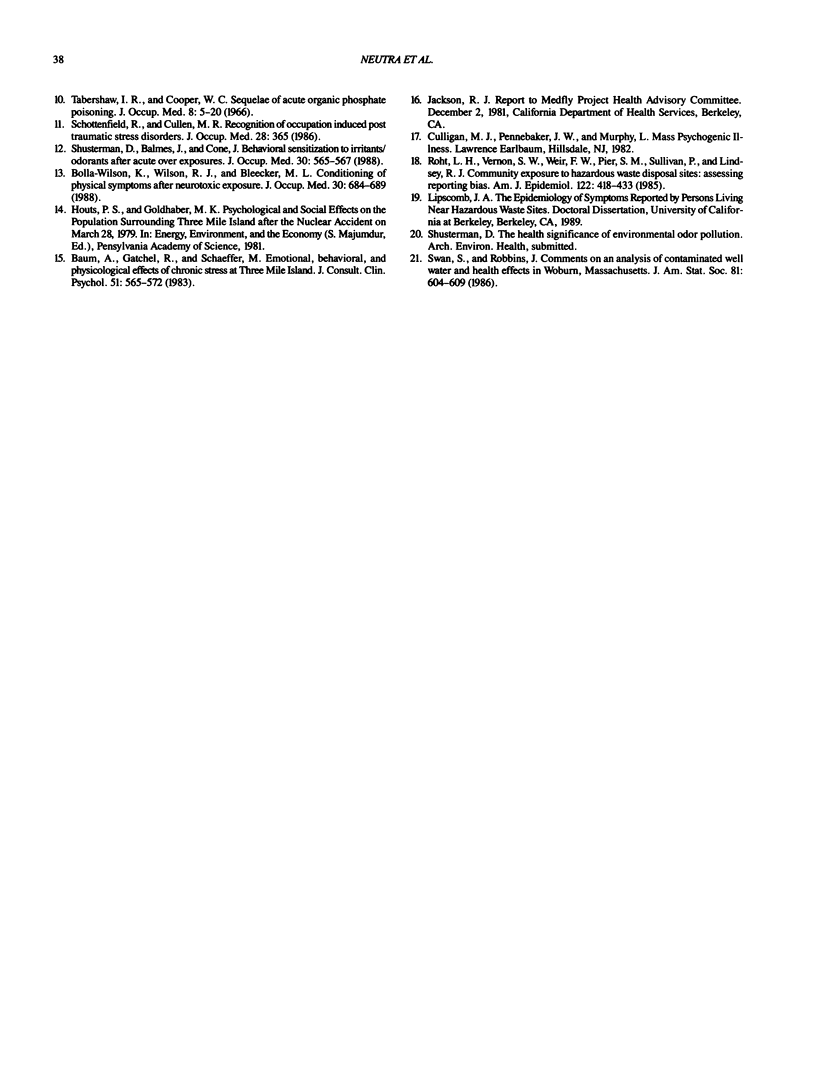
Selected References
These references are in PubMed. This may not be the complete list of references from this article.
- Baker D. B., Greenland S., Mendlein J., Harmon P. A health study of two communities near the Stringfellow Waste Disposal site. Arch Environ Health. 1988 Sep-Oct;43(5):325–334. doi: 10.1080/00039896.1988.9934943. [DOI] [PubMed] [Google Scholar]
- Baum A., Gatchel R. J., Schaeffer M. A. Emotional, behavioral, and physiological effects of chronic stress at Three Mile Island. J Consult Clin Psychol. 1983 Aug;51(4):565–572. doi: 10.1037//0022-006x.51.4.565. [DOI] [PubMed] [Google Scholar]
- Bolla-Wilson K., Wilson R. J., Bleecker M. L. Conditioning of physical symptoms after neurotoxic exposure. J Occup Med. 1988 Sep;30(9):684–686. [PubMed] [Google Scholar]
- Clark C. S., Meyer C. R., Balistreri W. F., Gartside P. S., Elia V. J., Majeti V. A., Specker B. An environmental health survey of drinking water contamination by leachate from a pesticide waste dump in Hardeman County, Tennessee. Arch Environ Health. 1982 Jan-Feb;37(1):9–18. doi: 10.1080/00039896.1982.10667526. [DOI] [PubMed] [Google Scholar]
- Roht L. H., Vernon S. W., Weir F. W., Pier S. M., Sullivan P., Reed L. J. Community exposure to hazardous waste disposal sites: assessing reporting bias. Am J Epidemiol. 1985 Sep;122(3):418–433. doi: 10.1093/oxfordjournals.aje.a114123. [DOI] [PubMed] [Google Scholar]
- Schottenfeld R. S., Cullen M. R. Recognition of occupation-induced posttraumatic stress disorders. J Occup Med. 1986 May;28(5):365–369. [PubMed] [Google Scholar]
- Shusterman D., Balmes J., Cone J. Behavioral sensitization to irritants/odorants after acute overexposures. J Occup Med. 1988 Jul;30(7):565–567. [PubMed] [Google Scholar]
- Tabershaw I. R., Cooper W. C. Sequelae of acute organic phosphate poisoning. J Occup Med. 1966 Jan;8(1):5–20. [PubMed] [Google Scholar]


